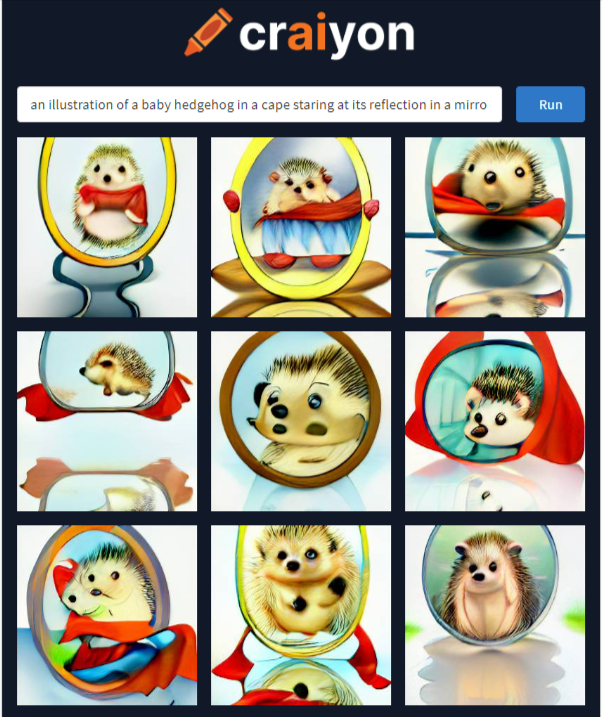










Craiyon
AI-powered logo maker.
Tags:Ai Artai AI art ai art generator ai generator ai image background removal craiyon ai image editingCraiyon,formerly DALL-E mini,is an AI model that can draw images from any
text prompt!
Just like millions of others who’ve played with the tool, we too can’t help but be awed by what this machine learning model is doing. As Weights & Biases’ Lukas Biewald mentioned in an interview with Craiyon developer Boris Dayma, “[The program] really feels like magic.”
Now for the curious among you, let’s look at some common questions people have about Craiyon:
What Is Craiyon?
Craiyon is an AI model that generates images from text. The user (that’s you) enters a text prompt (what you want to see) and Craiyon then goes about creating it. It was developed as a lighter version of OpenAI‘s DALL-E, and was initially named DALL-E Mini.
As you saw above, Craiyon can be used through our website and most people do just that. It can also be downloaded from Github, for those who want to do more with it than simply create fun memes and image.
How Does Craiyon Work?
The Craiyon model was initially trained on millions of images from the internet and captions that accompanied them. With this is was able to train to create the images from just a text prompt.
Not only was the model created to be able to reproduce the images however, it was also trained to combine concepts to create new images from any prompt it had a reference for.
This skill gives it the ability to create images like:

Accomplishing this is done in three steps:
- An encoder turns the text prompt into numbers, the number representing what the word/string is. (ex – hedgehog or staring)
- The model then compared this with what it’s been trained on. If it’s “seen” a hedgehog in an image, the hedgehog will be associated with a number.
- The model then generates the images from these associations, and you see them after they pass through a quality filter.
You can find more detailed technical information here.
The History Of Craiyon
The AI image generator was first proposed by Boris Dayma at the JAX/Flax Community Week, a competition of sorts that took place in June 2021 on the Hugging Face forums in collaboration with Google Cloud. The initial version Craiyon, called of DALL·E Mini, was trained for only 3 days on a single TPUv3-8 provided by Google Cloud during the program. Despite this short training time and architecture that’s 27 times smaller than that of OpenAI’s DALL·E, it was largely successful.
In late-May and June of 2022 it gained viral status, even making it into Know Your Meme. This seemingly caused confusion among users of the OpenAI project DALL-E and DALL-E 2, and at the request of OpenAI the name was changed to Craiyon.
Who made Craiyon?
Craiyon was developed by Boris Dayma at JAX/FLAX Community Week in June of 2021. Boris is a machine learning engineer based in Houston Texas. Besides Craiyon, he is responsible for other machine learning projects such HuggingTweets.
How long does it take for Craiyon to work?
Craiyon takes around two and a half minutes to generate images from the interactive web demo. For locally run instances of Craiyon, the speed depends on your computer’s hardware, and in Google Colab it takes only about one minute to generate images.
Examples of Craiyon in action
Craiyon fits zoomer humor like a glove, which is why it’s become so popular. Honestly, the sometimes incoherence and unpredictable results of Craiyon compared to its more sophisticated counterparts add to the charm. There’s something special about what Craiyon does – its ability to emulate the fever dream that is life on the internet. A penultimate representation of human consciousness poisoned by online communication and an insatiable need for new exciting stimuli.


